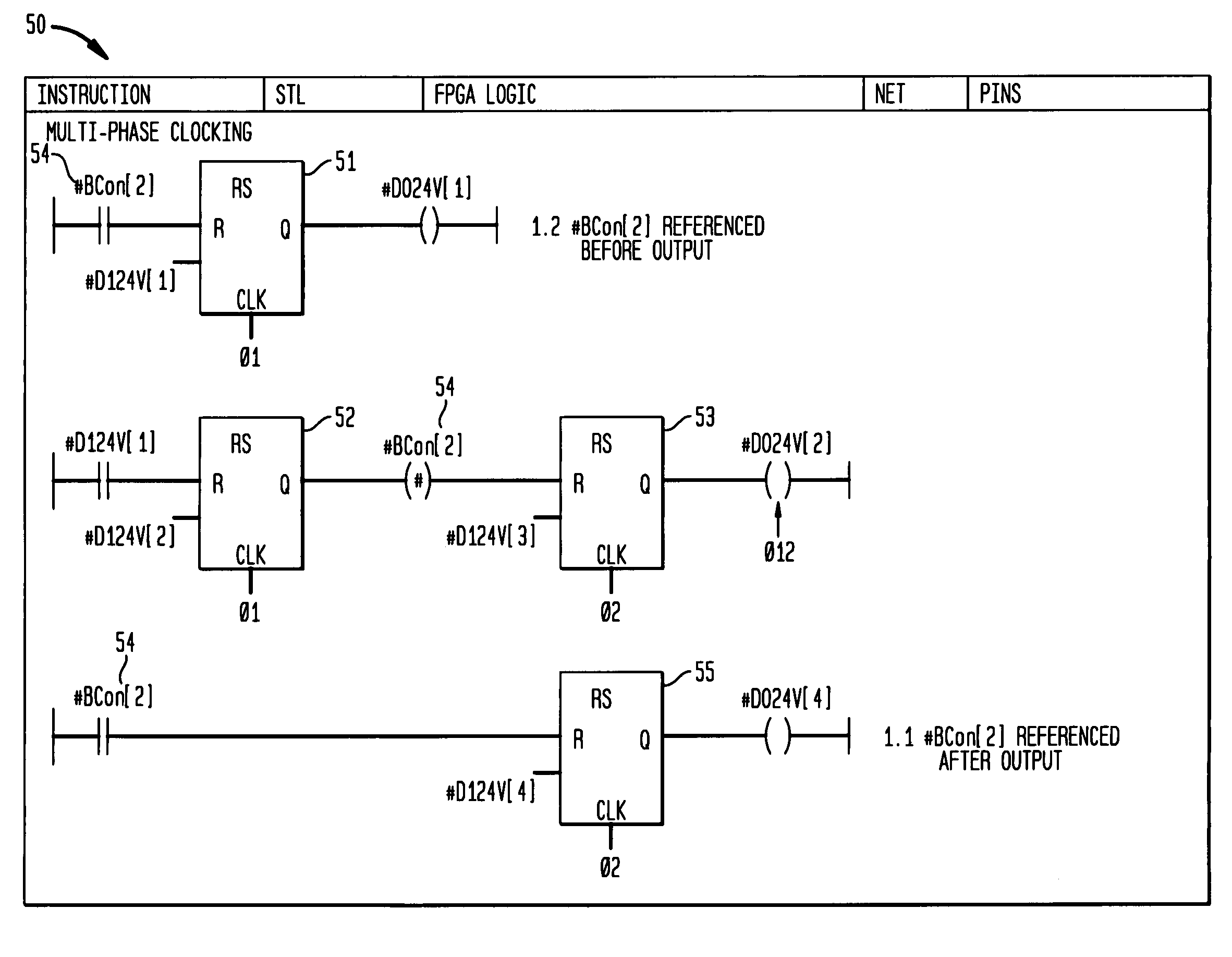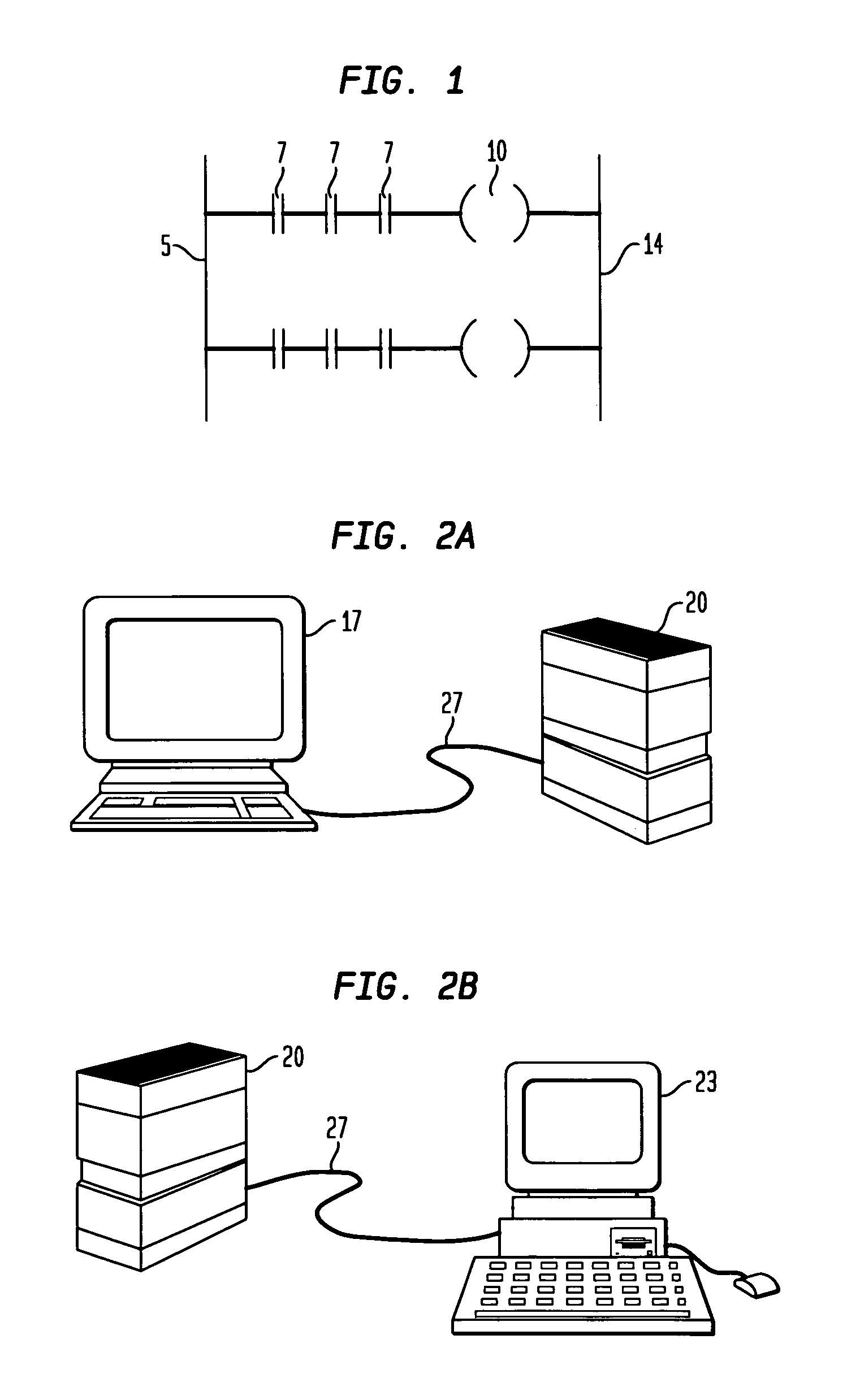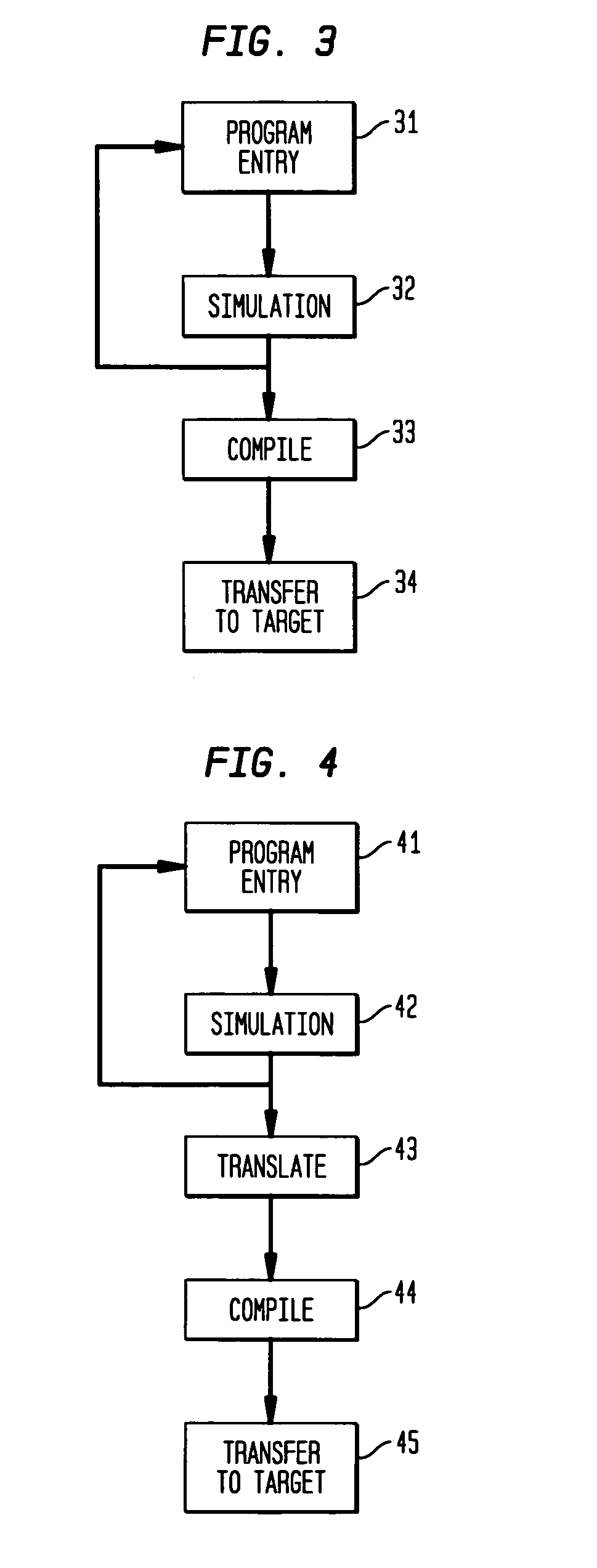Programmable controller with sub-phase clocking scheme
a programming controller and sub-phase clocking technology, applied in the field of processors, can solve the problems of inability to work properly, difficult and problematic simulation of parallel processing provided by external modules, and generally not supporting systems that require high-speed automation processing. , to achieve the effect of reducing time, eliminating the laborious task of determining and setting delays, and reducing race conditions in programming devices
- Summary
- Abstract
- Description
- Claims
- Application Information
AI Technical Summary
Benefits of technology
Problems solved by technology
Method used
Image
Examples
example
[0022]One example of the invention is set forth below:
1. Hardware
[0023]An FPGA in the processor module serves as a parallel execution machine. All combinatorial functions are performed in parallel. A multi-phase clocking scheme is utilized within the module to automatically compensate for clocked logic delays. The multi-phase clocking scheme will allow the user to program without concern for delays in different elements of the program. The module has a limited number of 24V input and 24V output points (up to 12 inputs and 8 outputs). The module provides 5V, differential I / O to support differential encoders (SSI and 5V quadrature). There are 3 differential inputs and 1 differential output. The CPU has access to 14 bytes of input and 14 bytes of output to permit transfer of user program control information, count values, counter preset values and other information. Module status and control information are supported with 2 additional bytes of input and output accessible to the CPU. Mo...
PUM
 Login to View More
Login to View More Abstract
Description
Claims
Application Information
 Login to View More
Login to View More - R&D
- Intellectual Property
- Life Sciences
- Materials
- Tech Scout
- Unparalleled Data Quality
- Higher Quality Content
- 60% Fewer Hallucinations
Browse by: Latest US Patents, China's latest patents, Technical Efficacy Thesaurus, Application Domain, Technology Topic, Popular Technical Reports.
© 2025 PatSnap. All rights reserved.Legal|Privacy policy|Modern Slavery Act Transparency Statement|Sitemap|About US| Contact US: help@patsnap.com



